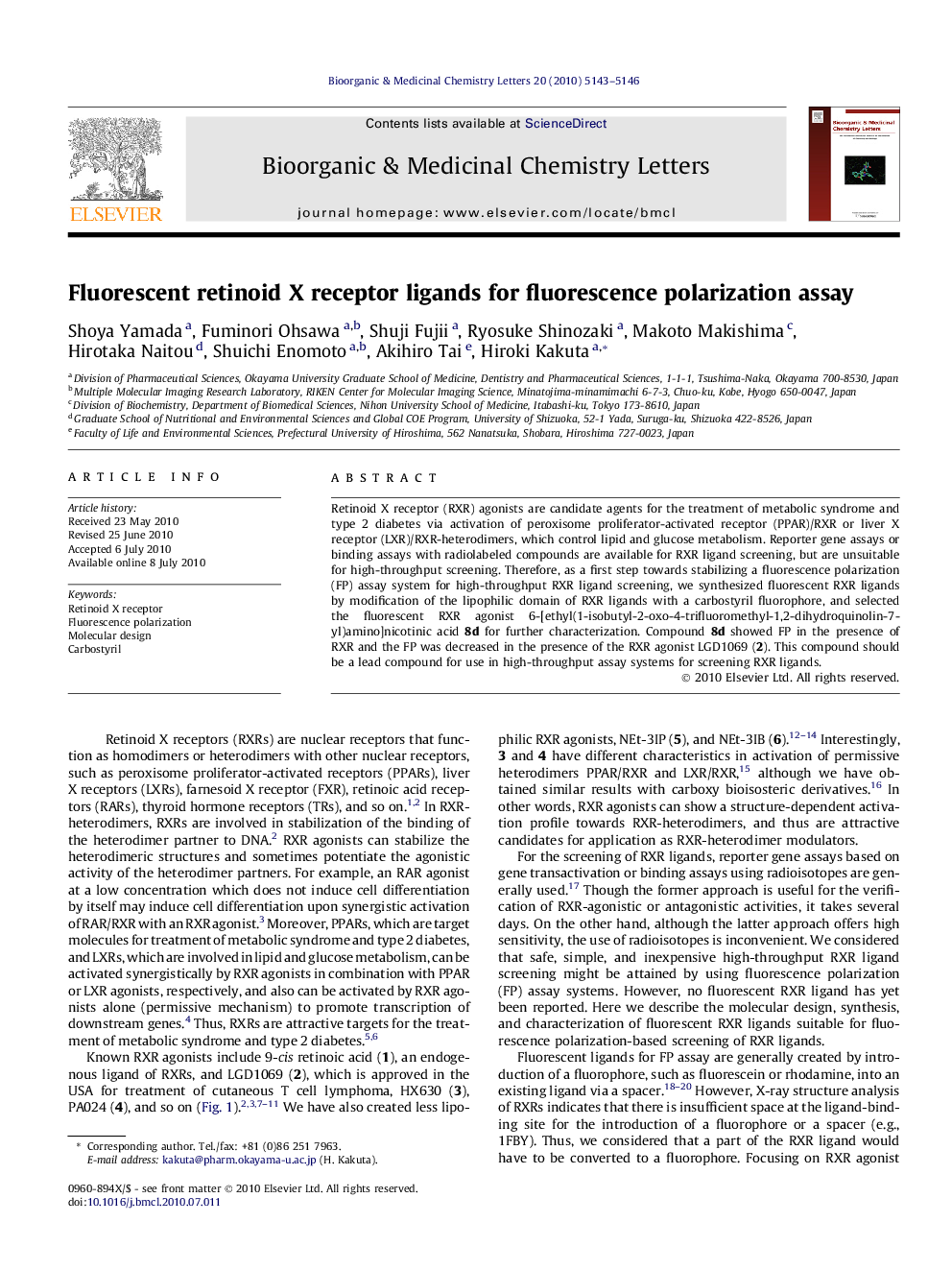| Article ID | Journal | Published Year | Pages | File Type |
|---|---|---|---|---|
| 1374639 | Bioorganic & Medicinal Chemistry Letters | 2010 | 4 Pages |
Retinoid X receptor (RXR) agonists are candidate agents for the treatment of metabolic syndrome and type 2 diabetes via activation of peroxisome proliferator-activated receptor (PPAR)/RXR or liver X receptor (LXR)/RXR-heterodimers, which control lipid and glucose metabolism. Reporter gene assays or binding assays with radiolabeled compounds are available for RXR ligand screening, but are unsuitable for high-throughput screening. Therefore, as a first step towards stabilizing a fluorescence polarization (FP) assay system for high-throughput RXR ligand screening, we synthesized fluorescent RXR ligands by modification of the lipophilic domain of RXR ligands with a carbostyril fluorophore, and selected the fluorescent RXR agonist 6-[ethyl(1-isobutyl-2-oxo-4-trifluoromethyl-1,2-dihydroquinolin-7-yl)amino]nicotinic acid 8d for further characterization. Compound 8d showed FP in the presence of RXR and the FP was decreased in the presence of the RXR agonist LGD1069 (2). This compound should be a lead compound for use in high-throughput assay systems for screening RXR ligands.
Graphical abstractFluorescent retinoid X receptor (RXR) agonist 6-[ethyl-(1-isobutyl-2-oxo-4-trifluoromethyl-1,2-dihydroquinolin-7-yl)amino]-nicotinic acid (8d) was synthesized by modification of the lipophilic domain of general RXR agonists. Compound 8d showed fluorescence polarization (FP) in the presence of RXR and the FP was reduced in the presence of an RXR agonist, LGD1069.Figure optionsDownload full-size imageDownload as PowerPoint slide
